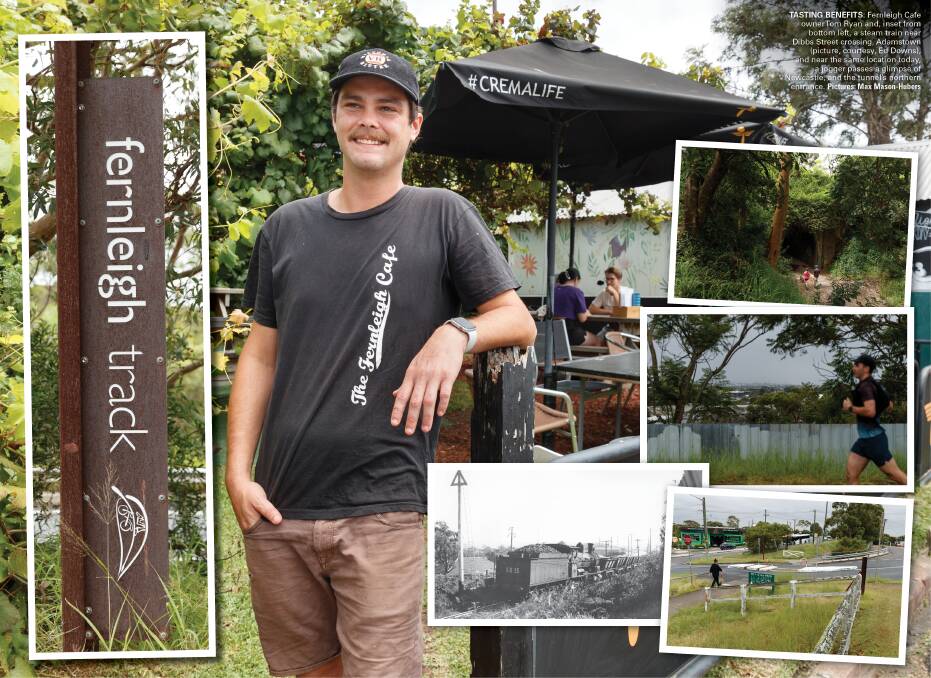
EMERGING from the half-light of Redhead Tunnel at its northern end, you find Newcastle laid out before you.
The historic tunnel may be only 181 metres long, but the journey through it leads you to another environment, another world.
On the other side of the tunnel was bushland, with Glenrock State Conservation Area cocooning you in that part of the the track. On this side of the tunnel is a great quilt of suburbs and glimpses of the city.
It is quite the welcome to Newcastle. If only all visitors could arrive via Redhead Tunnel.
Yet, in the opinion of rail historian and author Ed Tonks, City of Newcastle could do better at protecting what it has at the northern end of the tunnel.
He is not happy that the northern portal wears a crown of plants.
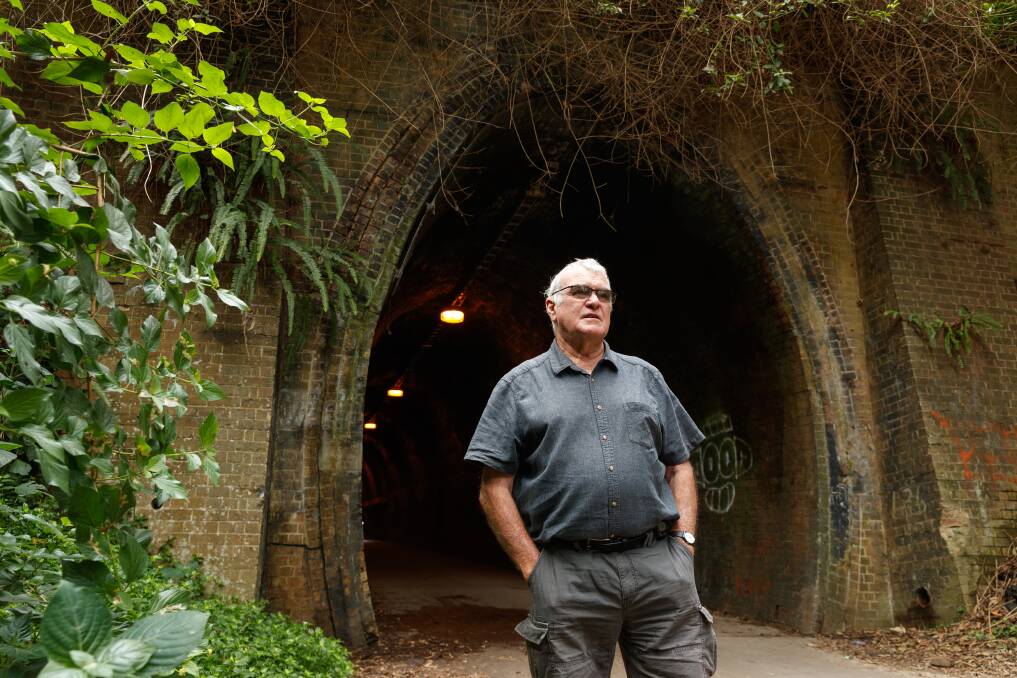
"Over the past couple of years, I've been very concerned about the vegetation growth over the northern portal of the tunnel," Ed Tonks says.
The historian refers to photos that show the portal when it was part of the rail line, and then, when it became the showpiece of the Fernleigh Track, with this section being opened to the public as a cycling and pedestrian path in 2003.
He points out the bricks and the sandstone capping were not covered in vegetation. Now, he argues, you can't see that part of the historically significant structure for the overgrowth.
"If that overgrowth is not addressed, there could be safety issues, not to say anything of it as a heritage item," he argues.
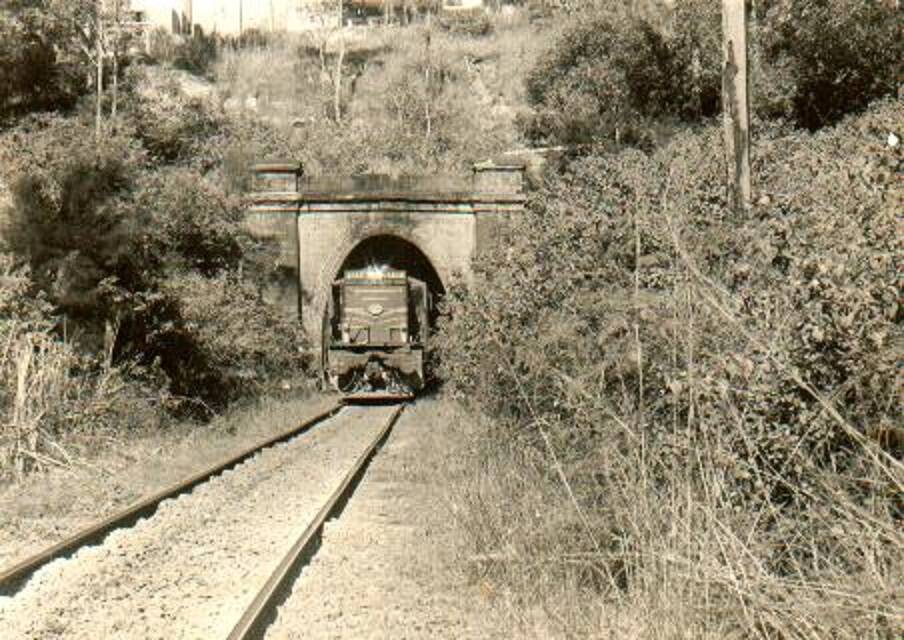
ON THE FERNLEIGH TRACK
- "On the Fernleigh Track with Scott Bevan": Part 1
- "On the Fernleigh Track with Scott Bevan": Part 2
- "On the Fernleigh Track with Scott Bevan": Part 3
- "On the Fernleigh Track with Scott Bevan": Part 4
- "On the Fernleigh Track with Scott Bevan": Part 5
- "On the Fernleigh Track with Scott Bevan": Part 6
-
"On the Fernleigh Track with Scott Bevan": Part 7
City of Newcastle, which owns this section of the track, says the tunnel is a "treasured asset". A council spokesperson has said there is a maintenance schedule, including vegetation control, that is carried out every six to eight weeks, and that the tunnel is monitored and inspected by engineers to ensure its safety.
"The results of the last inspections [in February 2021] indicated there were no major structural defects with the tunnel," the spokesperson has said.
When track users come out of the tunnel, perhaps they don't notice the portal, for they are looking ahead at the steep descent to Adamstown. As for those approaching the tunnel from the north, they are perhaps too busy regaining their breath after tackling the hill.
Ever since the rail line was built and the tunnel was pushed through the ridge in the late 1880s and early 1890s, that slope has been a challenge for humans and machines.
It is, as Ed Tonks explains, a one in 40 grade. In other words, a one metre climb for every 40 metres travelled horizontally.
"It was just about the maximum grade for locomotive technology at the time," the historian says.
In December 1916, when the passenger train was on its historic maiden run along the line to Belmont, the carriages were so heavily loaded with passengers, one locomotive proved to be not enough. It ran out of puff. So a second locomotive had to be brought from the depot at Hamilton to help pull the train up the hill.
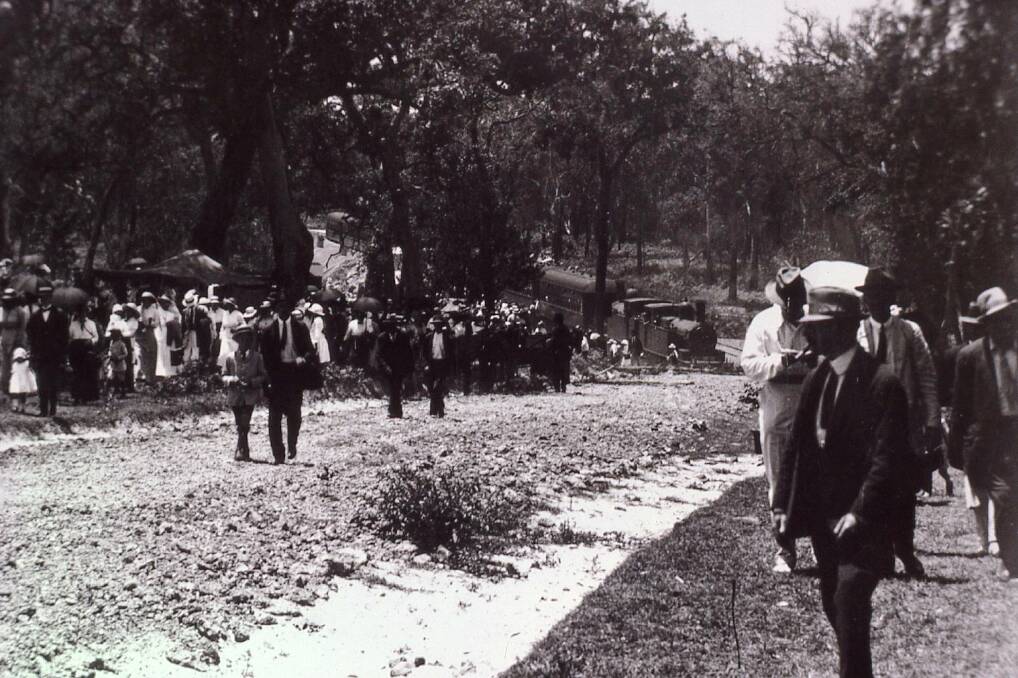
For coal trains, even when diesel-powered locomotives replaced steam, this slope was often a two-engine job.
And if the climb was a slog for the steam train crews, it could be a source of irritation for those who lived beside the rail line along here.
Former rail worker Ray Cross, who was on the Belmont Line for 18 years, recalls being in the steam train on a Monday morning and seeing the washing out on the clothes lines. And he knew how quickly those clean clothes could be blackened, if he wasn't careful.
"We had to watch the smoke and the 'priming'," Ray explains, "because that was like black rain."
The journey down the hill, from the tunnel to Adamstown, in a loaded coal train was even more challenging, Ray Cross says.
"It had its moments, a few got away," Ray says, quickly adding that no train he drove escaped down the hill - "luckily".
He estimates the trains were travelling at only about 15km/h down the hill, and in controlling the engines, "we went not by gauges but feel".
"It was like second nature - 'It's getting away a bit, I'd better put it on' - and sometimes we'd get to the bottom, and we'd have the engine in reverse. The 'smokebox dynamic brake', we'd call it. The old girls would stop."
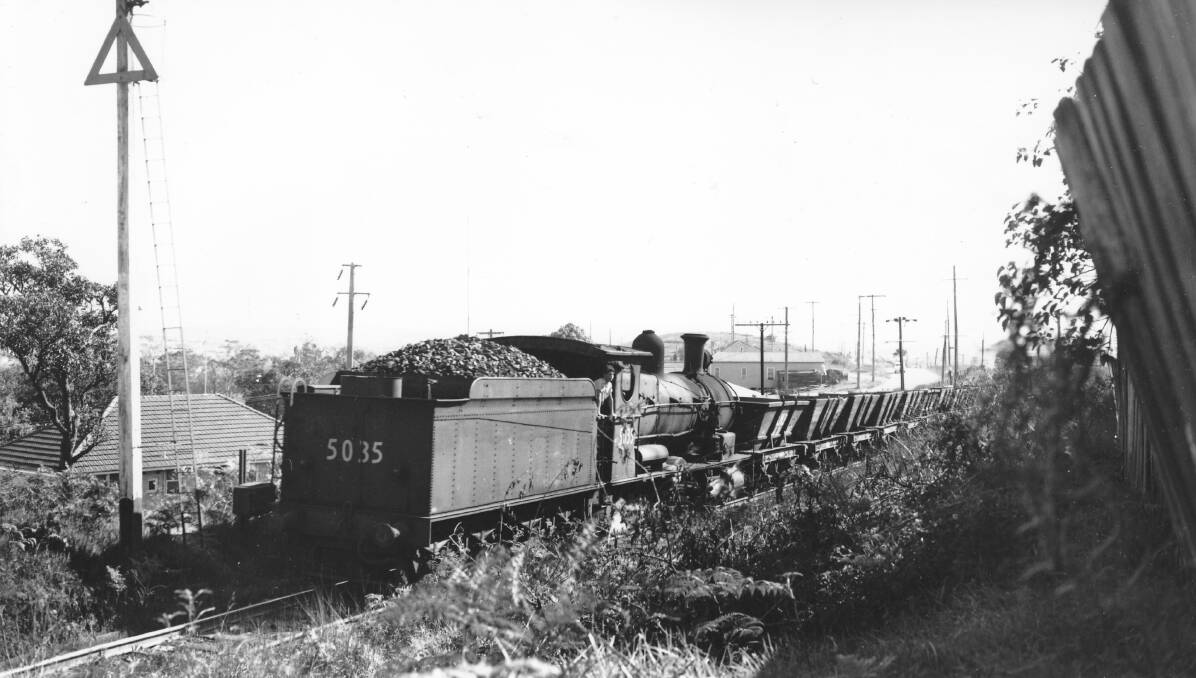
Unlike Ray Cross, I'm not in charge of a massive beast of steel hauling coal; just two leaden legs resting on the pedals, as I coast down the hill. I have time to look around.
This part of the track slices through suburbia. In the boom years of the 1950s and 60s, the slopes below Redhead Tunnel were filled in with housing, replacing little collieries with evocative names such as Ebbw Vale and Shortland. To the left of the line, the Belair estate sprung up, along with the shopping centre that has grown into Westfield Kotara.
At regular intervals along the track, there are entrance and exit points, which have made it attractive to those who want to cover a shorter distance. I stop at one of those points, at Bailey Street, to look at the view down the valley.
From here, I can see, in the distance, a hurriedly changing city, with the new residential towers punching the sky, marking out more of what is to come in Newcastle. It is one of the privileges of being on the Fernleigh Track; you can see both the past and the future, all the while cherishing being in the present.
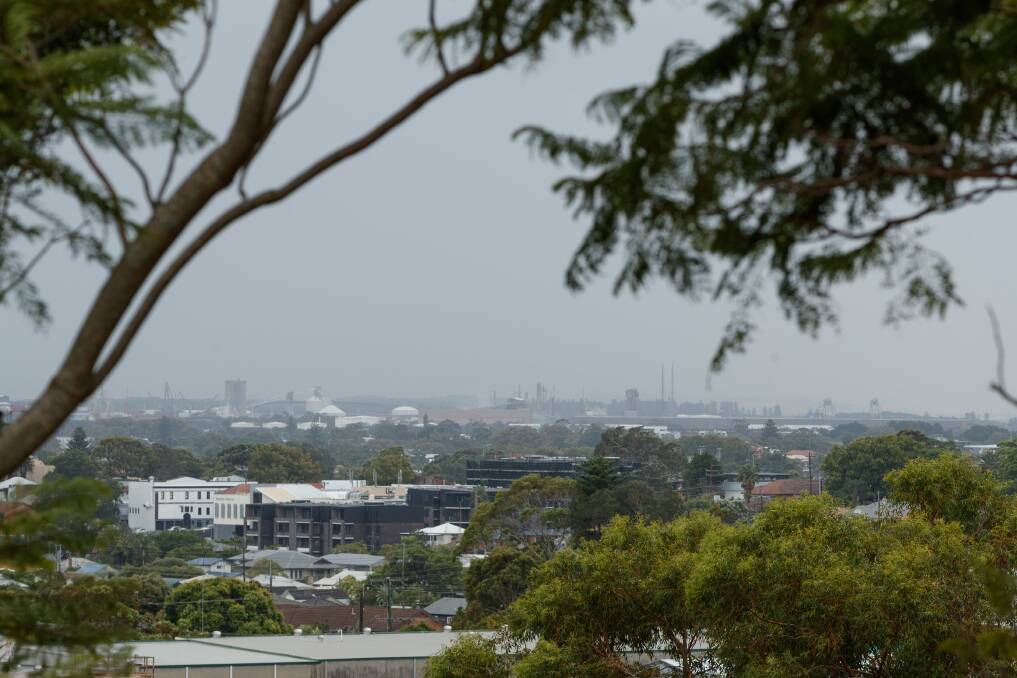
In the days of steam, it may have been soot falling onto the neighbouring streets, but these days it is money. For the Fernleigh Track has become a tourist attraction and a business generator.
Just near the Adamstown end of the track, at the bottom of the hill, is The Fernleigh Café.
The café has become synonymous with the track.
"If people Google the track, we come up," says the cafe's owner, Tom Ryan.
As a result, the track brings in business. Tom Ryan estimates up to 40 per cent of his customers are track users. Those customers are not just tourists - "People who live along the track, they come down to get a coffee" - but he noticed COVID's impact on trade.
"During lockdown, we really noticed it," he says.
Business was down 20 per cent, he estimates, as the riders from further afield, such as Sydney, weren't coming.
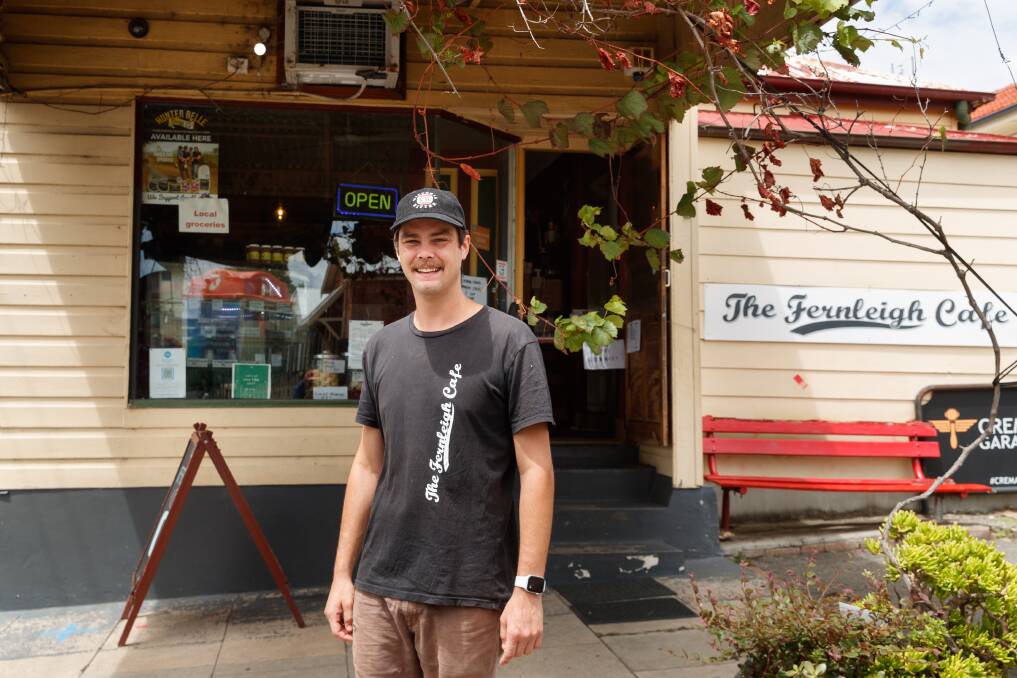
Which is an indication of how word is spreading about the Fernleigh Track. And how vital it is to businesses, such as The Fernleigh Café.
"It's just a drawcard," says Tom Ryan.
Newcastle Cycleways President Sam Reich says the $11 million spent on developing the track has been "returned in spades many times over", as it has become one of the top tourist drawcards in the area, particularly for cyclists.
"When you say 'Fernleigh Track', they say 'Newcastle'," he says. "In terms of cyclists, it's that well known."
The Fernleigh Track's northern end is marked by the imposition of the rushing, bustling world once more. Vehicles dash around the Park Avenue roundabout. Across the road is the main rail line and Adamstown station. This is where passengers used to change trains for the Belmont Line.
Retired railway man Ray Cross wishes they still could.
"It's a shame they couldn't use it as a commuter line to Belmont," he says. "Things change."
Indeed, they do.
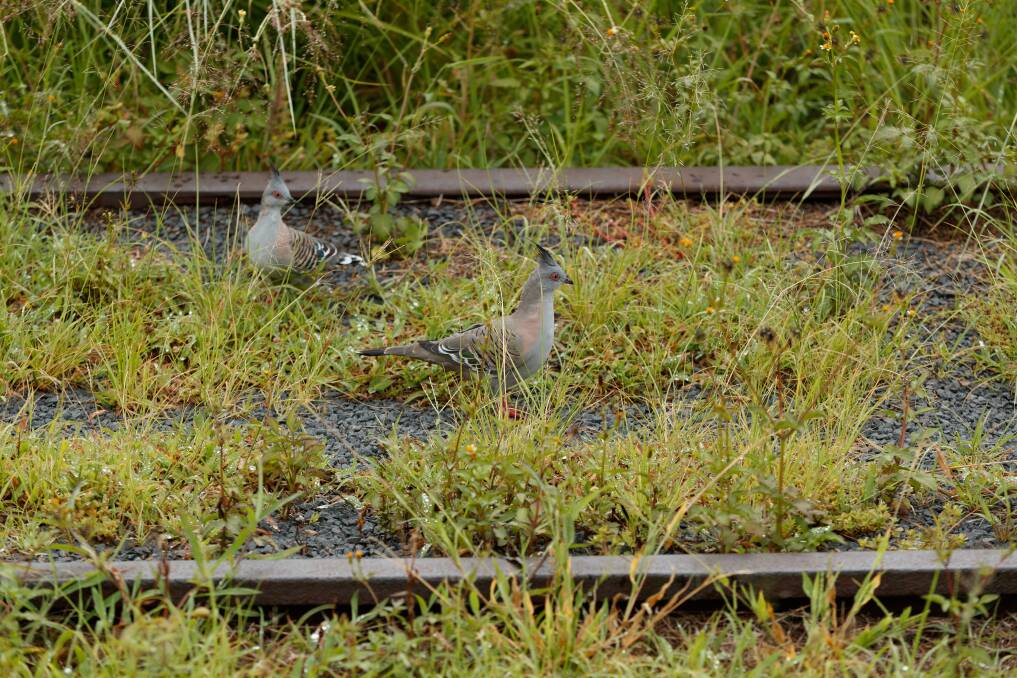
Like this 15.5-kilometre corridor itself, as it has changed from a rail line into a recreational path, riding the change of a city from a predominantly heavy industrial centre to a more diverse, more complex and, in the eyes of many, more liveable place.
The Fernleigh Track is a marker, and perhaps an agent, of that change in Newcastle and Lake Macquarie.
Newcastle Cycleways Movement president Sam Reich, who is also a committee member of the national organisation Rail Trails Australia, says the track is also an example further afield of how change can be achieved.
"The Fernleigh Track is a shining beacon for rail trail development," Sam Reich says.

LET'S end where we began this journey, back at Belmont. For a new beginning is taking shape around there.
The Fernleigh Track is being extended south to Blacksmiths. Lake Macquarie City Council is overseeing the 3.7-kilometre extension. The southern section is currently being built, and it is due to be finished by July. The northern section, through to the former Belmont rail station, is scheduled to be finished by October 2023.
The extension also has a new name. The acronym is FAST. However, that is not a directive on how to travel on the track. Rather, it stands for "Fernleigh Awabakal Shared Track".
More than being acknowledged in the name, the Awabakal people's culture will feature in artworks and stories along the track.
Riders and pedestrians will not only travel through some beautiful environments but can experience journeying through land that has been connected to humanity for tens of thousands of years.

Bahtabah Local Aboriginal Land Council, which is based at Blacksmiths, has been involved in the planning of the extension.
Kentan Proctor, from the land council, says he's "very excited" about the track's extension, "because it opens people's eyes and brings a new light to this area".
"It's inclusive for everyone, not only the Indigenous community but the wider community. It just opens up another whole aspect to Lake Macquarie itself," he says.
"It's like the gateway to the Hunter at Swansea, and you can pretty much go all the way from there into town, on your pushbike or your legs."
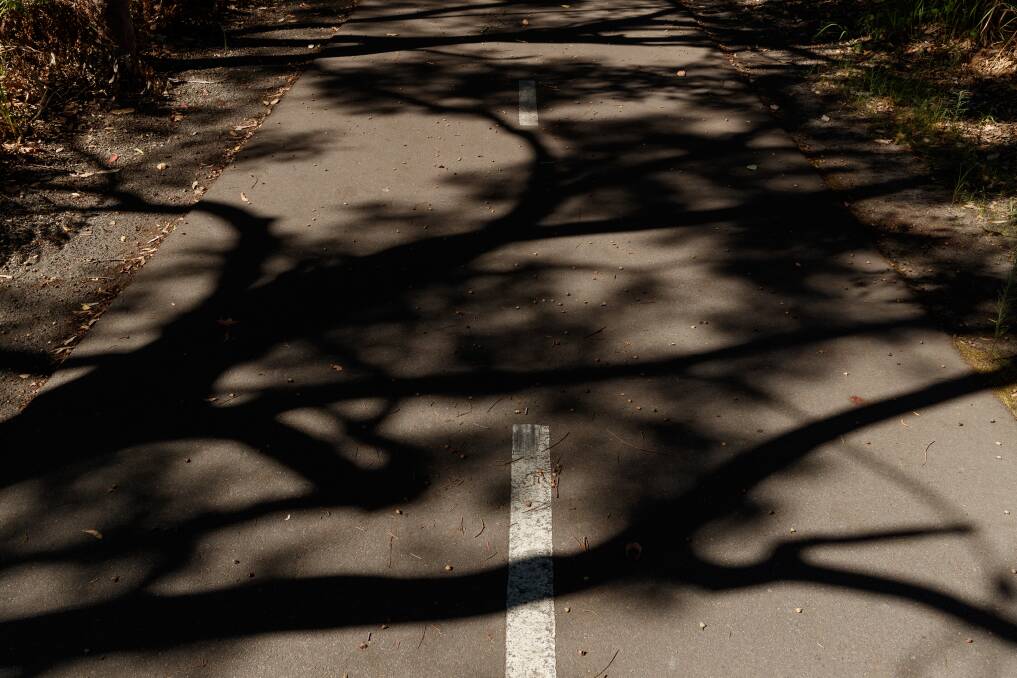
OUR Fernleigh Track journey in words has come to an end.
The American writer Paul Theroux has said travel has less to do with distance than with insight.
By way of distance, we haven't travelled far. Just over 15 kilometres. But it is a journey filled with insights.
The Fernleigh Track opens our eyes to where we live and where we have come from.
The track is a guide to what we have and who we are, as Newcastle and Lake Macquarie people.
And all we need to do to see that is to get out there.
See you on the track.







